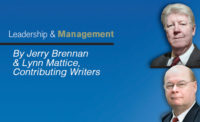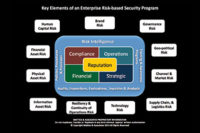The last element we will over in this series on ERM involves brand risk. An enterprise’s brand(s) is one of its most valuable assets. Many brands have become so iconic that they have become a verb rather than a noun. For instance, Xerox Corporation has had a long history of producing photocopier machines. Think about how many times you have heard some say, “I'm just going to Xerox this document.” There are numerous companies producing a product made with an adhesive strip and gauze square that is designed to cover a small cut or scrape. The typical response you hear when someone needs one of these health care products is…“Would someone please get me a Band-Aid?” Johnson & Johnson, which owns this iconic brand, is probably pretty delighted that their product receives such broad recognition.
Johnson & Johnson has had some great brand successes and some disasters as well. The company was widely hailed for its effective handling of the crisis involving tainted Tylenol a number of years ago. The company and the Tylenol brand recovered extremely well from what could have been a public relations nightmare. A year or so ago, Johnson & Johnson recalled Tylenol once again due to some potential contamination issues that occurred during the shipping and warehousing of the product. The lengthy time the product was off the shelf gave competitors a much stronger foothold in an already crowded market for pain-relieving products.
Another example that is currently making major headlines involves General Motors and the ignition switch issue involving several key brands of automobiles. The news has been peppered with stories of how GM knew of the problem years ago and chose not to conduct a recall. A government investigation is currently underway due to several deaths that have been attributed to the faulty switch. GM’s brand and reputation has been severely damaged by these revelations.
Damage to a company’s brand and reputation are not isolated to the U.S. market. Some foreign markets are hyper-sensitive to brand and reputation issues. For instance, Yum, the parent company of Kentucky Fried Chicken, had built a major network of KFC restaurants across China. KFC and Col. Sanders had become an iconic brand in China. When reports arose that there were concerns relative to the food safety and quality of chickens they used in their meals, the bottom dropped out of their Chinese market overnight.
Whether based on fact, fiction or social media hype, perception rules the day. How the market perceives a company and its brand(s) ultimately dictates success or failure. There are market phenomena that seem to overrule this concept, however. In the U.S., it is common knowledge that, as a general rule of thumb, consumers severely retaliate against any company that messes with their kids or their pets. Yet, Chinese companies have been taken to task time and time again by the Federal Trade Commission and the Food & Drug Administration for children’s toys containing highly toxic levels of lead paint, toothpaste containing anti-freeze and pet food containing high levels of asbestos and other toxins. Ironically, these issues have had little impact on the volume of Chinese products that are imported into the U.S. where cheap products seem to trump consumers’ logic.
In an earlier column in this series, we discussed the importance of establishing an effective risk intelligence program. One of the most compelling reasons to establish such a function involves the safeguarding of an enterprise’s brand and reputation. Constant vigilance in the marketplace is vital to understanding, responding to and mitigating incidents that can have a devastating impact on your enterprise’s brand and reputation. The other aspect that is vital is having a solid crisis management and crisis communications plan. This isn’t something that can be just pulled off the shelf and dusted off when it is needed…which we guarantee will always be too late. It is vital that enterprises run scenario-based exercises to ensure that you are ready to rapidly handle virtually any kind of issue that lands on your doorstep. In today’s world of instantaneous social media communications, it is absolutely essential that your enterprise is prepared, is experienced in handling crisis communications and responds immediately, as failure to do so taints you from the start.
About the Authors:
Jerry J. Brennan is the founder and Chief Operating Officer of Security Management Resources (SMR Group), the world’s leading executive search firm exclusively focused in corporate security. Lynn Mattice is Managing Director of Mattice and Associates, a management consultancy focused at the development and alignment of Enterprise Risk Management and Business Intelligence Programs, as well as Intellectual Property Protection and Cybersecurity.




